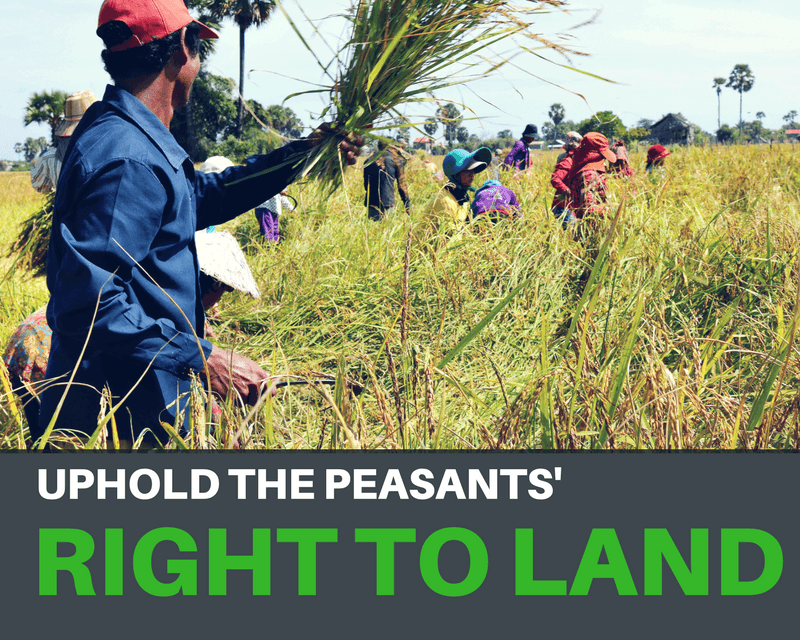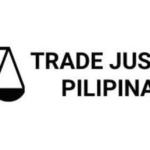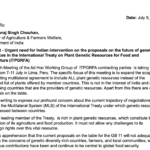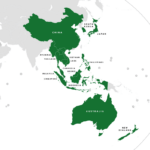This article is based on a forthcoming publication by Focus on the Global South, “Towards Human-Rights Based Tenure Governance in Asia: Perspectives, Challenges, and Strategies”
Landlessness and land insecurity are serious global problems. A quarter of the world’s 1.1 billion poor population is estimated to be landless, among them are 200 million people living in rural areas[1]. Rural landlessness is a crucial predictor of the extent of poverty and hunger[2], and in recent years, there has been a global consensus among international development institutions, civil society, and peoples’ movements that access to and control of land and natural resources are key to not only helping rural households improve their incomes, but also to living with dignity. Yet, although land is life for peasants, small-scale farmers, rural women, indigenous peoples, fisher folk and pastoralists, millions of rural families do not enjoy ownership of, or secure tenurial rights in land, fisheries and forests.
The Asian Context
Across Asia, rural poor, indigenous peoples, workers, peasants, women, youth, fisher folk, and herders face immense challenges in securing their rights to own, access, use, and/or steward land and other natural resources on which they rely for their livelihoods and identities. These include multiple crises arising from destructive infrastructure, resource extraction and resource development projects; climate change; land, water, and ocean grabbing; corporate control of agriculture and food systems, and; the undermining of small-scale food production and provision by corporate friendly policies and laws. These are compounded by the criminalization of dissent, human rights violations, and shrinking space for political participation by poor and vulnerable populations. Small-scale food producers, workers, and indigenous and other local communities who defend their lands, waters, resources, livelihoods and cultural identities face judicial and extra-judicial persecution, are branded “dissidents” or “anti-national,” and have little access to and input in policy and law making that deeply affect their lives.
Persistent poverty and inequality, negative impacts of climate change and disasters, continued erosion of human rights, and shrinking resource bases exacerbate existing vulnerabilities and marginalization. Poverty remains largely rural and its main manifestation is tenure insecurity, i.e. lack of access to and control of land and natural resources. Representatives from peoples movements in Southeast, East, and South Asia have identified the following threats and challenges with regard to their rights to land, forests, fisheries:
- Enclosures, privatization, and land grabbing: New frontiers of land and resource control are being created through agro-export, monoculture and industrial agriculture, land conversions, mining, coal, hydropower, forest exploitation and logging, conservation and national parks, real estate/property development, expansion of townships, etc. Large-scale infrastructure projects, free trade and investment agreements, and regional economic integration are driving forces behind many land grabbing and privatization cases.
- Territorialization: Using the power of eminent domain (i.e. appropriation of resources in the name of public interest), governments create new territories for investments through zoning, ceasefires, peace agreements, and relocation of villages and peoples from uplands to lowlands (for example, in India, Sri Lanka, Laos, Vietnam, Burma, Philippines and Indonesia). New territories of investment include Special Economic Zones (SEZs) and Special Investment Areas (SIAs) that are increasingly visible across the region. In South Asia’s contested upland and border areas, private land concessions for industrial crops are used by the military to control borders. Both physical violence and laws are used to control land, territories, and people.
- Financialization of resources: This is a relatively recent trend that can lead to a systematic erosion of land and resource rights through the transformation of a productive economy into financial products for trade, for example, the fabrication of virtual commodities such as biodiversity and forest carbon offsets, and trading them in financial markets and stock exchanges. The trading of virtual commodities is speculative and negatively affects the real economy, ways of production, extraction of resources, law making, and managing territories. The impacts of financialization are already evident in REDD and Blue Carbon schemes, which curtail the access of peasants, indigenous peoples, and fisher folk to their lands, territories and resources.
- Lack of acceptance of and respect for human rights: In many countries, governments do not recognize indigenous peoples as holders of particular rights. They are viewed as ethnic minorities, their customary rights are not recognized, and there are no legal provisions to address historical inequalities and injustices. Local non-indigenous peoples also suffer from tenurial insecurity in farmlands, forests, river, and marine areas. Overall, governments are reluctant to uphold the rights of local populations but prompt in enacting legislation that assures the rights of large-scale private investors.
- Shrinking political spaces; criminalization; and erosion of peoples’ rights: More and more, local community leaders, workers, peoples’ movements, civil society activists, journalists, lawyers, and other rights defenders are experiencing criminalization, physical and economic violence, and persecution. In Pakistan, India, Sri Lanka, Thailand, Cambodia, Laos, the Philippines, those who stand up for peace, justice and human rights are considered ‘enemies of the state.’ States are not alone in perpetrating violence: domestic, regional, and transnational investors and corporations are equally guilty of crimes, collusion with official perpetrators, and impunity. Since 2013, the Philippines has been considered as the deadliest place for environmental and human rights defenders in Asia. Most of the victims of violence and murders perpetrated by mining companies, paramilitary, and military forces have been indigenous peoples. The erosion of people’s rights are done through legal-regulatory measures; military dictatorships and imposition of martial law-type conditions such as curfews and arbitrary check points; manipulation of the justice system; physical violence, murder, state and non-state impunity; and creation of fear through threats, intimidation and harassment.
Land and Resource Rights as Human Rights
Many peoples’ movements, organizations of workers, small-scale food producers and indigenous peoples, and civil society activists in Asia have consistently challenged extractivist, market driven development, the kind of land and resource governance such development demands, and the state’s use of eminent domain in the expropriation and control of land, water, forests, and natural resources.
However, governments and international policy makers have placed land and resource governance within instruments of global markets, making land and natural resources into commodities. Tenure rights are framed as ‘property rights,’ and land, water, and other resources are valued based on market prices. This emphasizes the creation of land markets for selling and trading land and natural resources on one hand and on the other, the state’s role in providing a policy environment that will enable these markets to flourish.
Peoples’ movements and community rights advocates are increasingly turning to the human rights framework to build a human rights-based approach to the governance of land and natural resources. Such an approach would be based on the foundational principles of human rights: they are universal (apply to everyone without discrimination), inalienable (cannot be taken or given away), and indivisible and interdependent (the loss of one right impacts on all rights). This approach includes the three broad bundles of human rights:
- Civil and political rights: right to life and physical integrity; right to privacy and a fair trial; right to participate in civil and political life which covers freedoms of expression, association, assembly; right to vote.
- Economic, social, and cultural rights: right to decent work, right to an adequate standard of living including housing, food, and water; right to health, education, social security, and culture; the right to land and natural resources fall within this category.
- Collective rights: right to self-determination; indigenous peoples’ rights; right to development; environmental rights.
Although peoples’ organizations and small-scale food producers have articulated their struggles for land and natural resources in the language of human rights, they have also pointed to important contradictions in human-rights based tenure governance approaches:
- Individual vs. collective rights; private property vs. community rights: the human rights- based approach centers on individual rights rather than collective rights, though it does recognize the rights of indigenous peoples. In certain cases, however, there are overlapping and conflicting rights claims between different groups of peoples in the same territory. Conflicts are inevitable and the challenge is to find conflict resolution mechanisms to address them. There are also diverse interpretations about the composition of tenure rights, whether these pertain to full ownership or stewardship, the right to exclude other people from use and management of land and territories, etc. These are often linked to the different forms of tenurial arrangements and traditions that exist in Asian countries and communities.
- Securing legitimate tenure rights through land titles: land titling has been a way to recognize tenure rights, but while it is an important tool, it does not guarantee access, use, and control of land, territories, and resources. Titling can be either double-edged sword, in the sense that small-scale farmers may use their titles to sell and trade rights or inappropriate in the sense that corporations and unscrupulous individuals can manufacture or illegally acquire land titles that lead to land grabbing and resource-based conflicts.
- The right to say no and Free Prior and Informed Consent (FPIC). Communities that experience constant abuse and oppression assert that the ‘right to say no’ to projects, policies, programmes and laws that are antagonistic to their interests and rights, is a fundamental principle of human rights-based tenure governance. This also covers the rights of indigenous peoples to demand for meaningful FPIC, for their right to refuse a ‘development’ project that they deem not beneficial to them, and the right to timely and relevant information that will allow them to make informed decisions. However, in practice, FPIC has been reduced to token or selective consultation with community leaders and the options to refuse a project or even significantly change it, are rarely on the table.
At the same time, the principles of universality, inalienability, indivisibility, and interdependence offer strategic ways to place land, water, forest and natural resource rights as core human rights. Taking for example the right to food: hunger and malnutrition are serious problems that affect the poor, especially women and children. The right to food is connected to the right to life and states as duty-bearers should ensure that the right to food (economically accessible, adequate and safe) is achieved by the marginalized sectors of society through the institution of appropriate agricultural policies, provision of financial resources, and changing of structures, policies, and processes that create hunger and malnutrition. For small-scale food producers, workers, and rural and urban poor, appropriate agricultural policies are secure access to land and natural resources, control over production and market prices, wealth and redistribution mechanisms, etc. Further, as human rights are interdependent, access, use, and control over land and natural resources directly affect the enjoyment of a wide range of human rights, including the right to food. As disputes over natural resources often induce human rights violations, conflicts, and violence, states and private entities such as corporations are duty bound to respect, protect, and fulfil human rights obligations through preventive measures (i.e. do no harm), and enable access to redress mechanisms and justice for affected communities and victims.
The strength of the human rights framework in securing land, water, forest, fisheries and natural resource rights will depend significantly on the extent to which it can be used to resist, rollback, and prevent land and resource grabbing, and progressively realise the rights of small-scale food producers, rural peoples and indigenous peoples–and among these especially women—to land, natural resources, decent and dignified work and livelihoods, physical safety, economic, social and environmental security, and the opportunities to develop their potential. The right to development cannot be elaborated by the state, especially in the context of deepening neoliberalism and increasing corporate influence over our societies, economies and policies.
For this to happen, politics have to be brought back into the human rights framework. Land, forest and resource tenure and rights are about elaborating and where needed, redefining social-economic relationships within households, neighborhoods, states and countries, and entail exercises of power by states, societies and peoples. Land and natural resource rights are political rights of people and communities to decide how to use, manage, protect and share land and the natural wealth in the territories they inhabit. They cannot and must not be placed in markets, or attempt to be realized through market mechanisms.
[1] Global Land Tool Network (2008). Securing Land Rights for All. UN-Habitat, Kenya, p.4. Accessed at https://gltn.net/home/download/secure-land-rights-for-all/?wpdmdl=8234
[2] Palmer, D. et. al. (2009) “Towards Improved Land Governance”, Land Tenure Working Paper 11, FAO and UN-Habitat, p.9. Accessed at http://www.fao.org/3/a-ak999e.pdf









